News
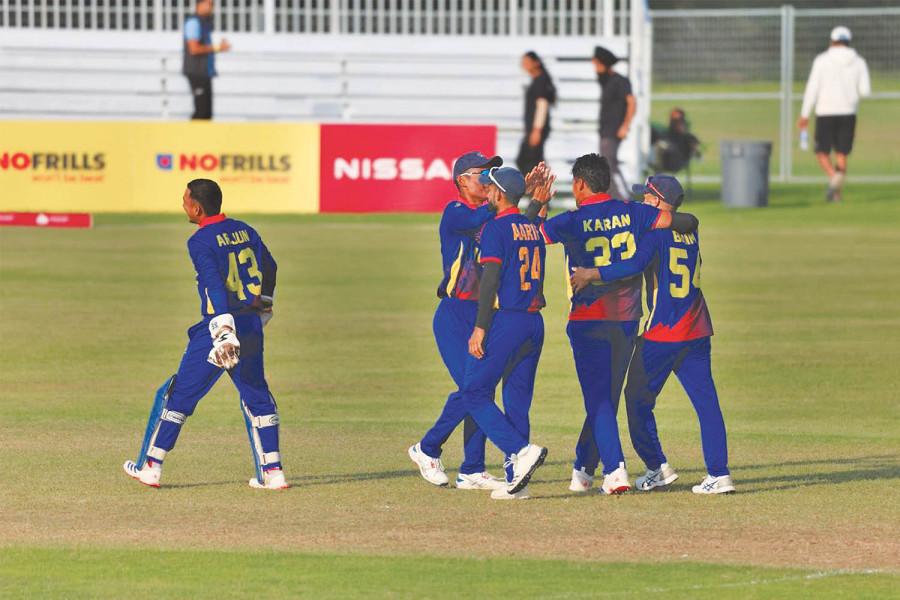
Nepal back to winning ways, finally
Nepal national men’s cricket team are finally finding their form as they defeated Oman by 56 runs in their third match of the Canada T20I Series to pull off their second victory in King City, Canada. Nepal had beaten the same side by 37 runs in their first T20I game on Sunday to end their eight match winless streak across both T20 and one-day formats that stretched back to May’s T20 World Cup warm-up game against Canada in Dallas, the United States. But Canada still proved a tough nut to crack for the Rhinos because Nepal have not managed to beat the Canadians in King City in their last four meetings. Nepal lost both their T20I matches of the series against Canada. They were also winless against the hosts in both matches of the ICC Men’s Cricket World Cup League 2. In fact, Nepal could not win a single match of the Canada Tri-Series of the League 2—they also lost to Oman by one wicket, while their second leg clash was abandoned without a ball bowled due to rain—that extended their winless run in the League 2 to five straight matches including three losses in the League 2 tri-series in Kathmandu. Nepal have won only one out of their eight matches of the League 2 and sit second from bottom with just three points. The T20I double against Oman is a welcome boost to Rohit Paudel’s men ahead of their tour to the US, where they will engage in a T20I bilateral series against the hosts and US Tri-series of the League 2 which also involves Scotland. However, it remains to be seen whether they can carry their T20I success to the US as well. Fortunately, Nepal, who have found more success in T20 format than one-day game this year, will have more time to rediscover their batting strength as they begin their tour of the US with the three-match T20I series first. The signs are promising as well. Gulsan Jha is in fine form. He scored a half-century and took a five-wicket haul in Nepal’s one-wicket League 2 loss against Oman but his unbeaten 40 and a bowling figures of 2-14 in T20I clash against Oman helped Nepal end their losing streak. He also made 34 runs against Canada during the League 2 and was unconquered on 23 against the same team in the T20I game. Captain Rohit Paudel is also gradually finding his strength with the bat. It was Paudel’s unbeaten 56 that helped Nepal post 157-7 in King City on Wednesday. His patient 44-ball knock featured two fours and four sixes. Paudel also took two Oman wickets in the only over he bowled that included the wicket of top scorer Zeeshan Maqsood (35 off 30). Kushal Bhurtel, who has more than 1000 career runs in all formats, has been the biggest flop of the year after continuously failing to impress in the opening line up. Bhurtel has been dropped to the lower order for his no show but it seems to have worked as he is slowly finding confidence with the bat. But the part-time bowler has never failed to make his mark when he bowls. He took a game-changing 3-10 in his magical 1.5 overs spell to restrict Oman to 101 that seized a 56-run victory on Wednesday. Bhurtel also scored 20 runs and took 2-32 against Oman in their first T20I clash. Nepal also fielded a separate XI in one-day and T20 format in King City with Aarif Sheikh, Arjun Saud and Anil Sah being one of the central figures for the ODI games. Among the trio, Sah could be the missing piece of the puzzle in Nepal’s opening order. After starting in the middle order in the League 2 with no success, Sah was given the opening job in all four matches of the T20I tri-series. Sah paid coach Monty Desai’s faith with a fine opening in his two outings. Continuing Sah in the opening order in the US tour might just do the trick for Nepal who will now look to get back in the game later this month. Big hitters Dipendra Singh Airee, who climbed to second spot in the ICC’s Men’s T20I all-rounder rankings on Wednesday, and Kushal Malla returned for Nepal’s T20I games in King City but have yet to deliver. Same is the story for Dev Khanal, who made his T20I debut in Canada and featured in two more games. But the batter, who captained Nepal U-19 team in the ICC U-19 Cricket World Cup in January and guided his team to a famous one-wicket win over Test nation Afghanistan with a half-century, might take some time to click with the senior team. Nepal’s another opener Aasif Sheikh is also not in the best form, while fast bowler all-rounder Karan KC has also struggled. But Sandeep Lamichhane continued his stellar performance with the ball taking 12 wickets in King City. The leg spinner also swung bat brilliantly and almost scored his first career ODI half-century (49 runs off 48 balls) during the League 2 against Canada when no others could.
Sports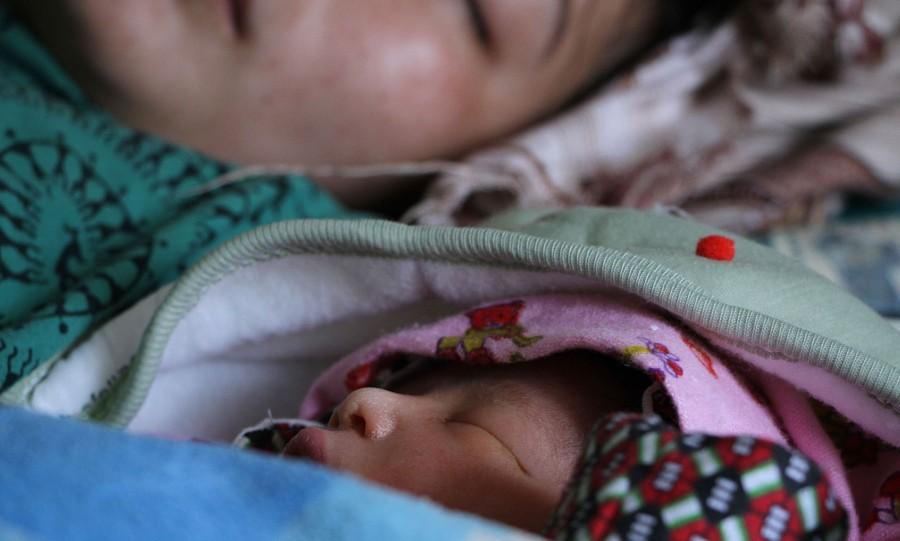
Road disruptions raise risk of more home deliveries in districts
Concerns are growing about a possible rise in home deliveries in several districts after road links were disrupted last week’s devastating floods and landslides. Officials at the Ministry of Health and Population said that they are aware of the growing risk and have instructed agencies concerned to start risk mapping. “The risk of home deliveries has grown due to last week’s monsoon havoc,” said Dr Bikash Devkota, director general at the Department of Health Services. “We have instructed agencies concerned to monitor the situation and report back. We also held discussions with our development partners about the risks and requested them for help.” At least 233 people have been confirmed dead, while 22 others are still missing in the floods and landslides triggered by record-breaking precipitation in three days starting Thursday evening last week. As many as 169 people have been injured, and more than 17,120 others were shifted to safety, according to Nepal Police. Transport links to many districts have been disrupted by the floods and landslides that swept the roads and bridges in many places. Health facilities and birthing centres in many places were also destroyed in the disaster. Maternal health experts say that the recent disaster could cause a severe setback to maternal and child health and also affect institutional delivery rate. “Due to the disruption in vehicular movements, many pregnant women may not be able to reach birthing centres,” said Nisha Joshi, a public health official at the Family Welfare Division under the Department of Health Services. “Pregnant women and new mothers who have lost family members or property in the disasters would be unable to reach hospitals or health facilities for childbirth.” Health officials say that they have cautioned health workers in the affected areas about the heightened risk of an increase in home deliveries, which increases the risk of maternal and newborn deaths. A report on maternal mortality carried out by the National Statistics Office in 2021 showed that for every 100,000 live births, 151 women still died from maternity-related complications. Similarly, the institutional delivery rate has reached around 80 percent. Maternal death rate and home delivery rate are very high in remote areas. “We are aware of the risk of a rise in home deliveries, which poses a threat to the health of mothers and their newborn,” said Joshi. “We have requested the United Nations Population Fund and Nepal Red Cross Society to distribute warm clothes to 12 new mothers in the Nakkhu area of Lalitpur, who are taking refuge in makeshift shelters.” Maternal health experts say expecting mothers may face difficulties in attending regular checkups during pregnancy, which could put both their lives and babies at risk. Along with a potential drop in institutional deliveries, the number of antenatal and postnatal visits could also decline due to the impact of the disaster, according to them. With the government announcing free institutional delivery service in 2009 at all state-run health facilities, more than 2,800 birthing centres were set up across the country. The institutional delivery rate, which was around 18 percent then, has now increased to an average of around 80 percent across the country. The health ministry also provides travel allowances for antenatal care visits, offers skilled birth attendant (SBA) training to staff nurses, and hires them at birthing centres to help prevent deaths during or after childbirth. Nepal had cut the maternal mortality rate from 539 per 100,000 births in 1996 to 239 per 100,000 births in 2016—for which the country even received a Millennium Development Goals award. In the last fiscal year, at least 190 women from 51 districts died of complications during childbirth, data provided by the health ministry shows. The actual number of maternal deaths due to birth-related complications could be much higher, as maternal and perinatal death surveillance is being carried out in 51 districts only, officials say. Nepal’s target under the UN’s Sustainable Development Goals is to reduce the maternal mortality rate to 75 per 100,000 births by 2030.
Health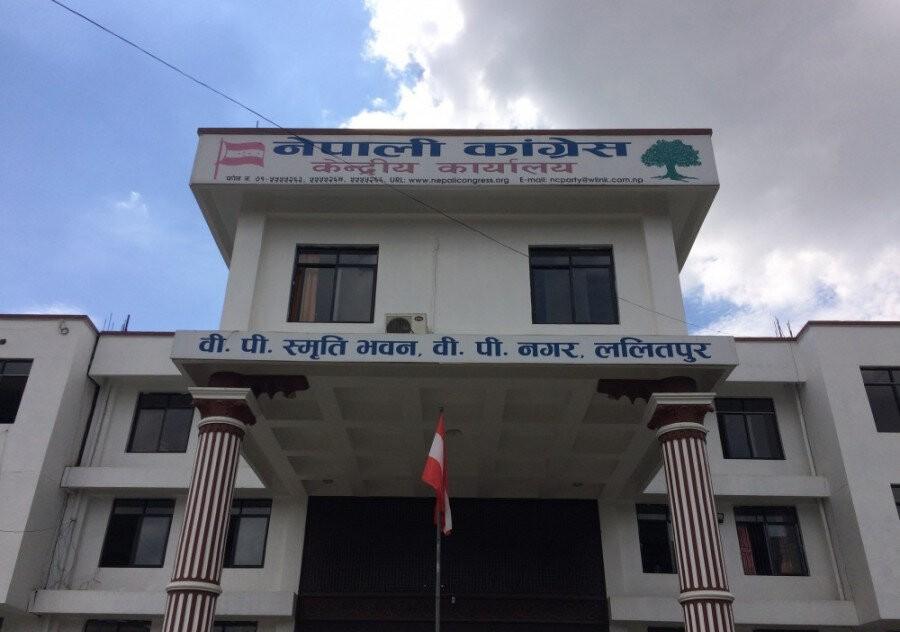
Congress’ 100-day campaign: Leaders advised to walk the talk, shun groupism
The Nepali Congress is holding a ‘100-day campaign’ to rejuvenate party committees, strengthen the bond between the party's local representatives and central leaders, and pacify the party's dissenters. The party’s central committee meeting, which concluded on September 1, decided to run the 100-day campaign from September 23 to December 31. Krishna Prasad Paudel, chief secretary at the party office, says many central leaders have already reached the districts they are assigned to run campaign activities. According to Paudel, the party’s seven joint general secretaries lead the campaign in the seven provinces. Senior leaders Krishna Sitaula, Shashank Koirala, Bimalendra Nidhi, and Bijaya Kumar Gachhadar, along with some central committee leaders, have either reached the assigned districts or are on the way, Paudel said. “When the party’s senior leaders and central committee members are in their districts, vice presidents and general secretaries of the party will monitor the campaign activities,” Paudel told the Post. “If necessary, the vice presidents, the general secretaries, and the party president will go to some districts.” One of the main objectives of the campaign is to renew party membership. “We claim our party has 0.9 million members,” Paudel said. “During the campaign, leaders will check the trend of party members renewing their membership.” The campaign has been launched at a time when leaders have already started to devise their plans for the next general convention. As per the Congress statute, the party must hold its general convention every four years. The party’s 14th general convention was held in December 2021. If the statute is followed, the party’s next convention should be convened by the end of 2025. Some Congress leaders have floated the proposal of contesting the next general election on its own, without forging electoral alliance with other parties. General Secretary Gagan Thapa floated a proposal to this effect at the Mahasamiti meeting in February that forwarded the proposal to the central committee to take a decision on the issue. “If we are to fight elections on our own [without an alliance], we need a strong organisation, therefore the party is emphasising strengthening the party by conducting campaigns,” Paudel told the Post. But, for the party leaders, success of the campaign will largely depend on the way it will be run. “Will the party leaders try to connect the party organisation to the public or will they conduct it in just a traditional manner? This will determine the success of the campaign,” Guru Ghimire, a Congress leader, told the Post. Ghimire suggested that the party leaders should also gauge the strengths and weaknesses of other parties in the districts. Ghimire also advised the leaders not to use the campaign as an opportunity to promote factional activities. When public disenchantment towards the major parties is growing fast, the campaign the Congress has decided to carry forward could be a means to connect the leaders with the public, says a Congress leader. “This campaign will re-energise the relations between the party and the public, and the party should work hard to make this event fruitful without baggage of internal factions,” Sanjay Kumar Gautam, a Congress lawmaker, told the Post. Reconnecting with the public is a compulsion for the political parties, say political experts. Soon after the November 2022 election, major political parties including the Congress held several campaigns to reconnect with the people but the masses may not be quite impressed by the leaders’ announcements they make during the rallies unless they deliver when in power. Earlier, the CPN-UML carried out various drives such as ‘mission grassroots’, a march along Mid-Hill Highway. “Political parties’ efforts to get connected with the people is something commendable in itself,” Geja Sharma Wagle, a political analyst close to the Congress, told the Post. “But, if the political parties don’t deliver while they are in government, people might not be convinced by their pledges.” Wagle adds that as the Congress is in government, people take the leaders’ speeches seriously only if they work for them sincerely. During the 100-day campaign, the party has decided to inform the party members and local leaders regarding the seven-point agreement reached between the Congress and the CPN-UML on July 1. Based on the same agreement, the two parties formed the coalition government led by UML chair KP Sharma Oli on July 15. As per the deal, Oli will hand over the government leadership to Congress President Sher Bahadur Deuba after two years. Besides their power-sharing in the federal government, the Congress and the UML have shared powers in provincial governments as well. While Koshi, Lumbini and Karnali provincial governments are led by the UML, Congress provincial lawmakers head Bagmati, Gandaki, and Sudurpaschim governments. The two big parties have backed Janamat Party to head the provincial government in Madhesh. During a meeting of the coalition partners held in Singha Durbar on September 9, Prime Minister Oli had reportedly complained that the coalition partners did not work enough to counter the ‘disinformation campaign of the opposition parties’ against the Oli government. “The opposition has spread confusion about the government, but the parties in government have not shown any interest in countering the disinformation,” the prime minister had reportedly said at the meeting. “All the ruling partners should defend the government.” Congress leaders will inform the party’s district representatives about the spirit of collaboration with the UML, constitutional amendments, and other issues. They are also responsible for informing the party members at the grassroots about policies such as the common minimum programme. Earlier this month, the Congress-UML coalition brought the programme that has, among other things, reiterated its commitment to reviewing the achievements made and weaknesses observed in the course of implementing the constitution in the past nine years.
Politics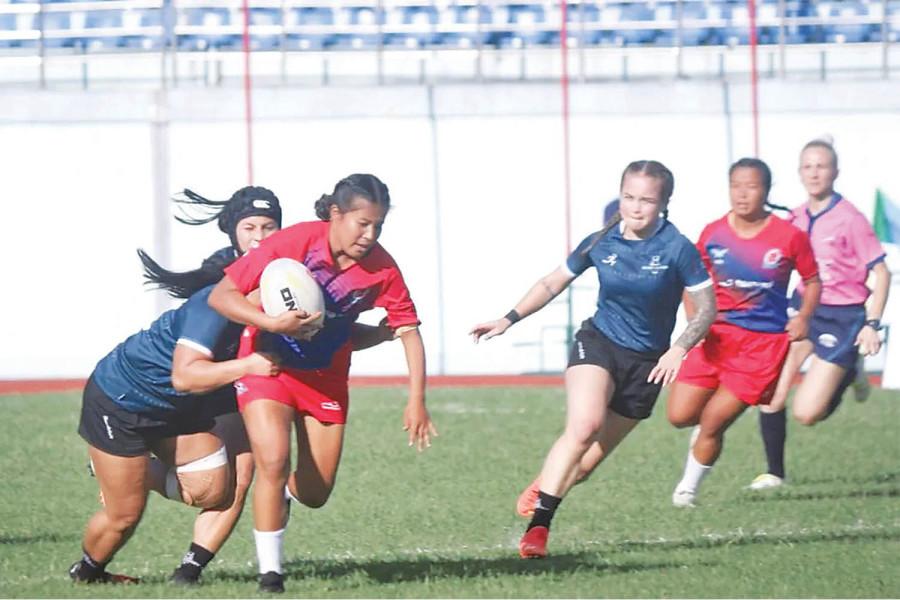
Women’s team save Nepal’s blushes
Nepal women’s team ended the Day 1 of the Asia Rugby Sevens Trophy with a victory at the Dasharath Stadium in Kathmandu after the hosts’ men’s team suffered defeats in both their matches. Nepal women had lost their first match 32-0 against the Philippines and faced a 17-5 defeat against Guam in their second Group E game of women’s pool but bounced back to see off Uzbekistan 12-7. Nepal’s men’s team, who are in Group B, lost their matches 24-0 against Uzbekistan and 27-7 against Bahrain. The Asia Rugby’s biggest tournament, which features 14 men’s teams and eight women’s teams from all five sub-regions of Asia, will conclude on Saturday. The men’s teams include Afghanistan, Bahrain, Bangladesh, Chinese Taipei, India, Jordan, Kazakhstan, Nepal, Pakistan, the Philippines, Qatar, Saudi Arabia, Sri Lanka, and Uzbekistan. The women’s teams are Guam, India, Indonesia, Iran, Nepal, the Philippines, Sri Lanka, and Uzbekistan.
Sports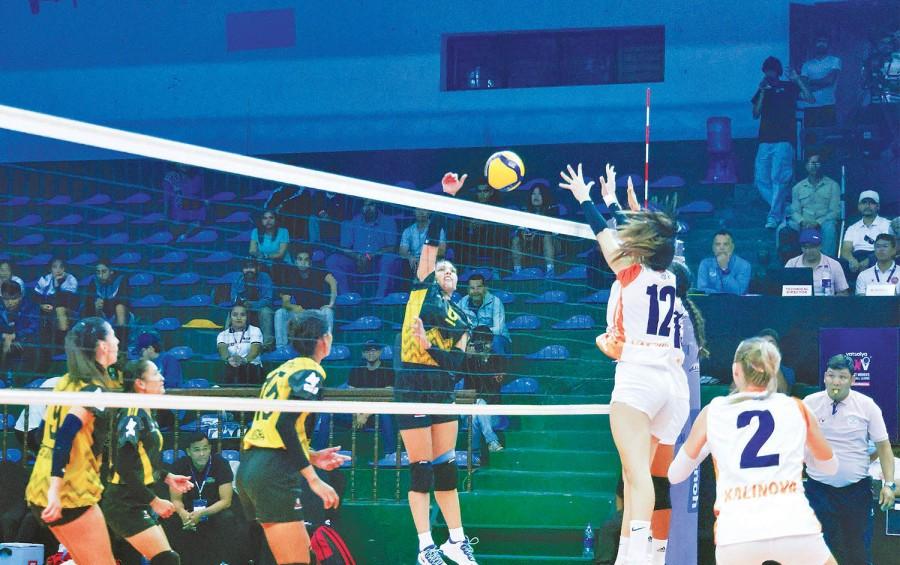
Karnali continue winning run, third victory for Kathmandu
Karnali Yashvis continued their winning run in the Everest Women’s Volleyball League as they defeated Chitwan Shakti 3-2 in a thrilling battle at the National Sports Council’s covered hall in Kathmandu on Thursday. Karnali came from behind twice and took the fifth and deciding set for a 20-25, 25-18, 21-25, 25-15, 15-13 victory that also helped them maintain a perfect start in the league. The win gave Karnali a fourth victory in as many matches and they are the only team to taste a defeat. The victory put them firmly in position to reach the final as they have 10 points and lead the standings. The top two teams at the end of the single robin league will progress into the final, which is scheduled for Saturday. Kathmandu Spikers are in the second spot after they pulled off their third straight victory with a 3-1 win over Madhesh United. The victory also cemented Kathmandu’s bid for the final. They have nine points from four matches. The outcome eliminated winless Madhesh from the competition without playing their last match. Madhesh have lost all their four matches. Kathmandu’s victory also showed the exit door to Gandaki Thurders, who are also winless and have just one point in the league. Madhesh started brightly, winning the first set 25-15 but Kathmandu fought back to win the remaining sets 25-23, 25-15, 25-18 to extend their winning streak to three matches. Kathmandu had lost their opening game against Lalitpur Queens 20-25, 25-21, 21-25, 19-25.
Sports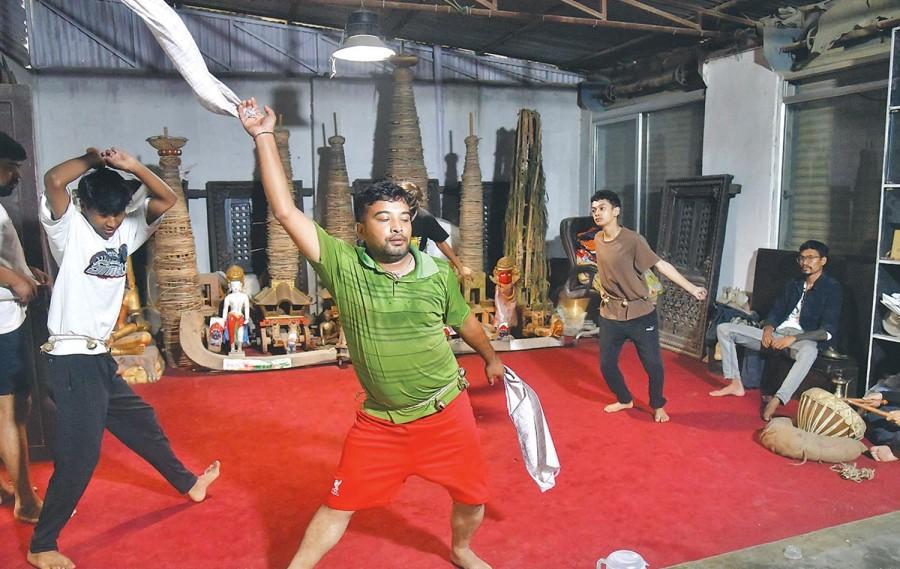
Ranjitkar community reviving lost Lakhe dance after a century
The rhythmic beat of the Dha echoes through a Bhaktapur alley, blending with the energetic footsteps of dancers. Bhaktapur, which sees jatras and festivals round the year, is no stranger to music, dance and celebrations. But this is not an ordinary occasion. The performers in question are Lakhe dancers who are reviving the Ranjitkar Lakhe dance after a century. The young dancers are preparing for Indra Jatra this year, where mask-clad Lakhe dancers roam the streets to rid the community of hardships and suffering. Lakhe, demon deities revered as protectors of people and crops, are thought to reside in the demonic mask. As the dancer dons the mask, the spirit is said to take over. Bhaktapur was once a key site for the Ranjitkar Lakhe performances, but the art form vanished from the city after the 1934 earthquake. “Bhaktapur suffered the most damage during the 1934 earthquake," says Ganesh Ram Ranjit, treasurer of the Ranjitkar Group’s Bhaktapur branch. “The destruction left residents struggling to recover for a decade, making it nearly impossible to perform the costly Lakhe dance.” The Ranjitkar Group discovered the extinct dance in the year the group was established. They located a Lakhe temple in Bhaktapur that had closed after the earthquake. After two years of research, they learned that performing the Lakhe dance was seen as a good omen in Bhaktapur and involved hosting community feasts. However, the high cost of this tradition forced many to sell their properties, rendering it unfeasible in the city’s post-earthquake conditions. Over time, the dance was abandoned as more lands supporting these cultural events were lost during rapid urbanisation. “There was a significant decline in our engagement with our cultural heritage,” says Rabi Shakya, a sculptor and Lakhe dance teacher training the new dancers. “The encouraging change now is the strong interest from the new generation, which is making it possible to revive intangible heritage like this dance.” After 100 years, the Ranjitkar Lakhe Dance is making a return to Bhaktapur at this year’s Indra Jatra. “It’s challenging to accurately re-enact the dance since it hasn’t been seen in a century,” Shakya notes. “As a sculptor, I drew inspiration from Bhaktapur’s revered Shree Navadurga Bhawani to create the Lakhe’s mask.” Similarly, the dance was choreographed by studying Lakhe dances from Kathmandu, Patan, and Banepa within the Ranjitkar community, and combining them with traditional steps from Bhaktapur Lakhe dances. “As for the musical instruments, we are using traditional instruments like Dha, Dhime, and Ponga, which are said to excite the Lakhe,” says Rajendra Maharjan, Lakhe dance teacher and musician. Maharjan is one of the experienced Newari arts teachers working to revive the lost Lakhe dance. He is involved in training young students in cultural arts and is now dedicated to the Ranjitkar dance training, with the students practising together nearly every day. “Becoming a Lakhe performer involves more than just wearing the costume and mask,” said Sudin Ranjit, a Lakhe dance student. “We must train extensively with our teachers, and it demands a lot of hard work.” To Ranjit, a resident of Bhaktapur, the training is more than learning a new craft; it is a matter of protecting culture. Growing up only interested in instruments, he slowly understood how important continuing cultural practices like Lakhe dances is for their community. “The dance will not only bolster Bhaktapur’s cultural pride but also boost tourism and create jobs,” says Dr Purushottam Lochan Shrestha, a professor and researcher specialising in Bhaktapur and Newari culture. Shrestha notes that reviving the dance would offer employment to everyone involved, from the dancers and the sculptor making the masks to those participating in the rituals. “Economic centres throughout the city, from small businesses to large industries, will benefit from the influx of tourists attracted by the Lakhe dance,” Shrestha adds, commending the Ranjitkar group's initiative. Once the Ranjitkar community revitalises the Lakhe dance, the Ranjitkar group plans to set up a new Guthi house with a fresh community fund and organise annual events for the dance. “The Lakhe dance won’t let them separate,” Shakya remarks. In today’s globalised world, where identity often merges into a homogenised blend, shared cultural practices provide a sense of connection and belonging. This new Lakhe dance embodies that spirit of togetherness for the community involved. “Reviving the dance after 100 years,” Shakya says, “is about preserving our culture for the next 300 years.”
Culture & Lifestyle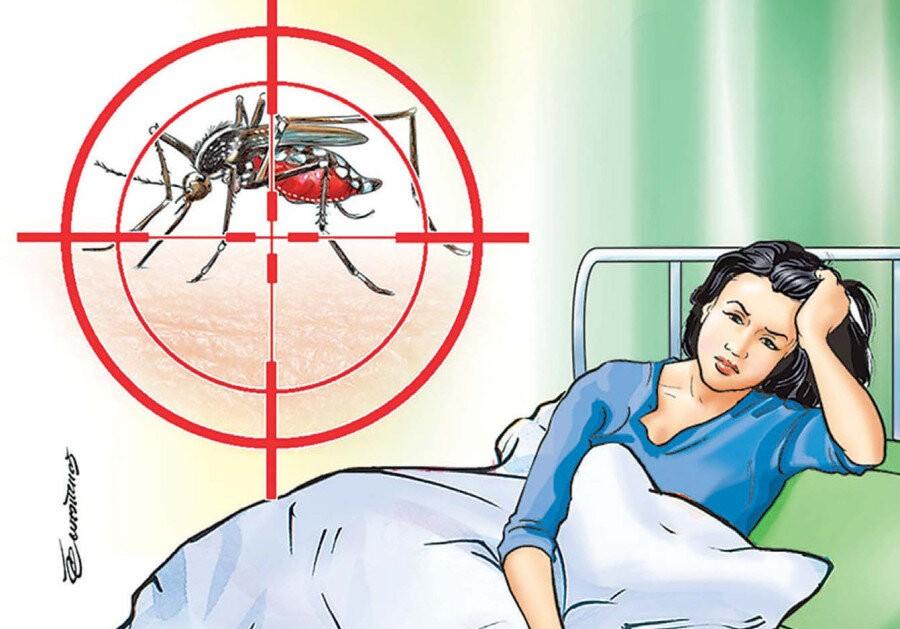
Dengue surge sparks critical blood shortage
Ram Prasad Koirala, a resident of Nalagaun in Belkotgadhi Municipality, Nuwakot, spent all of Thursday racing around Kathmandu and Bhaktapur, desperately searching for platelets for his 13-year-old son, who has been infected with dengue. Doctors at the Maharajgunj-based Tribhuvan University Teaching Hospital, where his son is being treated, told Koirala to get platelets as his son’s platelet count had dropped to a dangerously low count of 13,000 per microlitre of blood. A healthy count ranges from 150,000 to 450,000 platelets a microlitre. “The doctors have asked me to arrange six pints of platelets, but I could manage only one pint,” a frustrated Koirala told the Post. “I spent the whole day visiting several blood banks across Kathmandu and Bhaktapur, but still couldn’t find donors.” This was a common refrain among many relatives of seriously ailing dengue patients who had come to the Central Blood Transfusion Service (blood bank) in search of platelets, as hospitals in the Valley have been reporting a surge in dengue cases. Officials at the central blood bank said that the demand for platelet-rich plasma and platelet concentrate has tripled compared to the usual daily collection. “Demand for blood and blood components is about 400 pints a day, but we have been able to collect only around 100 pints,” said Sanjeev Kumar Yadav, senior technical officer at the Central Blood Transfusion Service. “We urge everyone eligible to step forward and donate blood. We have been struggling to meet the demand, and families of critically ill patients are in a difficult situation as they can’t find blood.” Officials attributed last week’s monsoon disaster and the start of the Dashain holidays to the decline in blood collection. They say the closure of colleges for the Dashain holidays, along with many offices and organisations suspending blood donation campaigns due to the festival, has led to a sharp drop in donations. “We are ready to travel to Nuwakot, Dhading and other adjoining districts of the Valley to collect blood, as we have no other option for saving lives,” said Yadav. “Relatives of patients, especially those with dengue, have been waiting at the blood bank round the clock.” Officials at the blood bank are worried about a severe blood shortage, as colleges will not reopen until after the Chhath festival (first week of November), and many people will soon be leaving the Valley. They said there is already a daily demand for over 100 pints of platelet-rich plasma and platelet concentrate for dengue patients. As a single patient requires multiple pints, they lament that it is impossible to meet the demand at the current collection rate. “We have also sought help from mainstream as well as social media for blood donations,” said Yadav. Dengue is a mosquito-borne disease transmitted by female Aedes aegypti and Aedes albopictus mosquitoes. The same vector also transmits chikungunya, yellow fever, and Zika viruses, according to the World Health Organisation. At least seven deaths and 14,975 infections have been reported from 76 of 77 districts across the country. Experts say reported dengue cases could be just the tip of the iceberg, as around 90 percent of the infected people do not show any symptoms. The post-monsoon period is considered a high transmission season for dengue, but Nepal has witnessed outbreaks of the deadly disease since the beginning of the year and across the pre-monsoon, monsoon, and post-monsoon seasons. According to doctors, mild to high fever, severe muscle pain, rashes, severe headache, and pain in the eyes are some symptoms of dengue. The World Health Organisation says there is no specific treatment for severe dengue, but early detection and access to proper medical care can save lives.
Health
What I Watch Online: Ashra Kunwar
I prefer this channel because Rick discusses music theory and songwriting, breaking down iconic rock songs. His ‘What Makes This Song Great?’ series helps me better understand the nuances of classic hits. The Charismatic Voice I follow this channel because Elizabeth Zharoff’s vocal analysis of rock and metal singers inspires me to refine my vocal technique. Her insights into powerful performances are invaluable for me as a musician. Andertons Music Co I prefer Andertons because their gear reviews and guitar demos keep me updated on the latest types of equipment. I also enjoy their interviews with rock legends, which gives me a better sense of the tools behind music. JustinGuitar I like JustinGuitar because the lessons are clear and easy to follow, especially when learning rock riffs and guitar techniques. It’s a great way to refine my music skills at my own pace. Premier Guitar I prefer Premier Guitar for its ‘Rig Rundown’ series, which shows the gear setups of famous rock musicians. This provides ideas on how to craft my sound and helps me understand the creative processes behind music.
Culture & Lifestyle